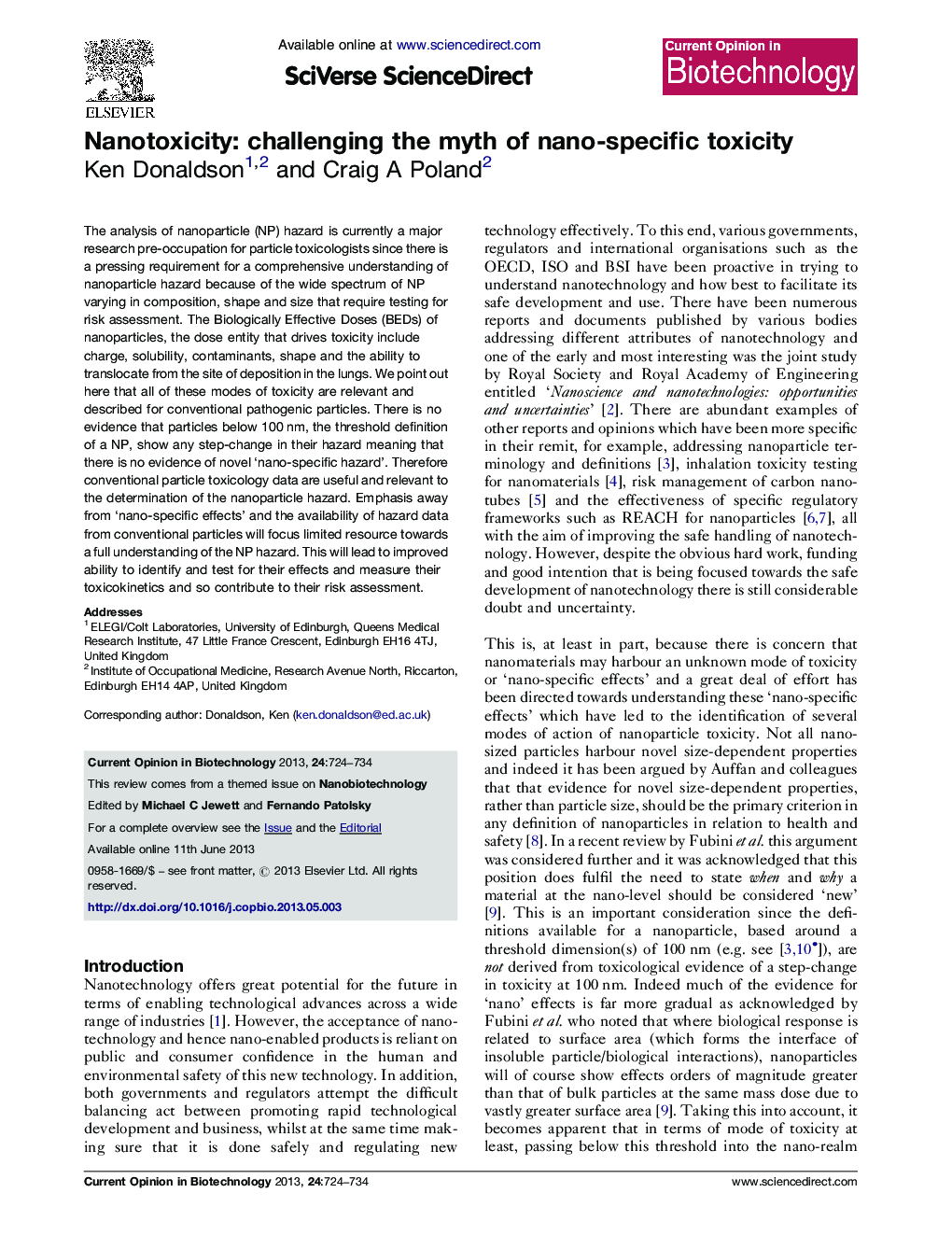| کد مقاله | کد نشریه | سال انتشار | مقاله انگلیسی | نسخه تمام متن |
|---|---|---|---|---|
| 15663 | 42465 | 2013 | 11 صفحه PDF | دانلود رایگان |

• The Biologically Effective Dose (BED) is the mechanistic entity that actually drives toxicity.
• Mechanisms of nanoparticle (NP) toxicity need to be considered in relation to conventional particles (CPs).
• Recognition of similar mechanisms would aid in benchmarking the NP hazard.
• Currently known NP BEDs include surface area, soluble species, charge and shape.
• All of these BEDs also drive CP toxicity so, whilst nano-relevant, they are not nano-specific.
The analysis of nanoparticle (NP) hazard is currently a major research pre-occupation for particle toxicologists since there is a pressing requirement for a comprehensive understanding of nanoparticle hazard because of the wide spectrum of NP varying in composition, shape and size that require testing for risk assessment. The Biologically Effective Doses (BEDs) of nanoparticles, the dose entity that drives toxicity include charge, solubility, contaminants, shape and the ability to translocate from the site of deposition in the lungs. We point out here that all of these modes of toxicity are relevant and described for conventional pathogenic particles. There is no evidence that particles below 100 nm, the threshold definition of a NP, show any step-change in their hazard meaning that there is no evidence of novel ‘nano-specific hazard’. Therefore conventional particle toxicology data are useful and relevant to the determination of the nanoparticle hazard. Emphasis away from ‘nano-specific effects’ and the availability of hazard data from conventional particles will focus limited resource towards a full understanding of the NP hazard. This will lead to improved ability to identify and test for their effects and measure their toxicokinetics and so contribute to their risk assessment.
Figure optionsDownload high-quality image (94 K)Download as PowerPoint slide
Journal: Current Opinion in Biotechnology - Volume 24, Issue 4, August 2013, Pages 724–734